Reportage

China shares land borders with four of the seven South Asian countries (India, Pakistan, Nepal, and Bhutan). The Himalayas mountain constitute the natural boundary mountains between China in East Asia and the South Asian subcontinent. But the Himalayas have not been an obstacle to friendly exchanges between the people of China and South Asia. China has a long history of interaction with South Asia based on common geographic ties. Chinese civilization has been deeply influenced by South Asian culture, and at the same time, Chinese civilization has also profoundly influenced South Asia. After the founding of PRC, China established diplomatic relations with South Asian countries one after another. 70 years of diplomatic exchanges between China and South Asian countries have been characterized by various disputes leading to wars, as well as touching stories of iron friendship forged by overcoming difficulties together. Since the 18th National Congress of the Communist Party of China (CPC), under the guidance of Xi Jinping's thought on great power diplomacy with Chinese characteristics in the new era, China's diplomacy in South Asia has made a series of achievements, China's diplomacy with South Asia has entered a stage of all-around engagement, and the BRI has made rapid progress in South Asia. At the same time, China's South Asian diplomacy has also encountered the test of more complex geopolitical games in the new era.
1. The Evolution of China's Diplomacy in South Asia (1949-2012)
South Asian has not been prominent in China's overall diplomatic layout. On the one hand, due to geographic barrier, China's influence and interest are mainly focused on East Asia; on the other hand, due to the factor of national strength, after the founding of the PRC in 1949, China has always been a regional power and lacks both the strength and the strategic will to expand its diplomacy in all aspects of South Asia.
Since the founding of PRC, there has been a relatively clear main line or feature throughout China's South Asian diplomacy: its diplomacy is centered around the relationship between India and Pakistan in South Asian region. The deep reason for this is the unique power structure of the South Asian region. The South Asian region is a typical unipolar system, with India at the top of the power pyramid. Pakistan is the only country in South Asia that can provide a strategic check and balance on India. Since the independence of India and Pakistan in 1947, the India-Pakistan conflict has always been the main line of international relations in the South Asian region, and it is the India-Pakistan conflict that brought the U.S.-Soviet Global Cold War to South Asia. Whether it is the United States, the Soviet Union (and later Russia), or China, the basic spine of their South Asian diplomacy revolves around the India-Pakistan relationship.
Since the establishment of the People's Republic of China in 1949, China's South Asian diplomacy has been marked by the India-Pakistan confrontation. After the end of the Cold War, when confrontation between the great powers diminished, China's South Asian diplomacy gradually began to try to decouple itself from the India-Pakistan confrontation. With China's economic rise and accelerated growth from a regional power to a global power, China's regional diplomacy in South Asia has expanded from an India-Pakistan oriented approach to an all-encompassing South Asian diplomacy. Since the 18th National Congress of the Communist Party of China (CPC) , as the new era of great power diplomacy with Chinese characteristics unfolds, South Asian has occupied an increasingly important position in China's overall diplomacy, and the all-round South Asian diplomacy has been further expanded. The implementation of BRI has opened up a new horizon for China's South Asian diplomacy.
China's South Asian diplomacy before the 18th National Congress can be divided into three stages.
(1) The phase of "India-centered" diplomacy in South Asia (1949-1962)
After the founding of PRC in 1949, Many countries still supported the Kuomintang and its representatives in international bodies, PRC required open negotiations with China before diplomatic relations could be established. One by one, South Asian countries negotiated the establishment of formal diplomatic relations with PRC.
India was the first South Asian country to establish diplomatic relations with China. China has long been in a good position to establish diplomatic relations with India. The Chinese Communist Party and the Indian National Congress Party (INCP) supported each other's struggle for independence before the two countries became independent, and formed a deep friendship in their joint anti-imperialist and anti-colonial efforts. On April 1, 1950, China and India negotiated the formal establishment of diplomatic relations, making India the first non-socialist country to establish diplomatic relations with PRC. India was
dissatisfied with the entry of the People's Liberation Army (PLA) into Tibet in 1950 and still tried to retain the privileges gained during the British imperialist invasion of Tibet. However, after negotiations, on April 21,1954, India gave up its privileges in Tibet and recognized China's sovereignty over Tibet. In the process, the three countries jointly put forward and advocated the Five Principles of Peaceful Coexistence.
Against the backdrop of the successful resolution of some of the historical issues remaining between the two countries, Premier Zhou Enlai paid his first visit to India on June 25-26, 1954, while Nehru visited China from October 19-30, 1954, and Chairman Mao Zedong met with Nehru on four occasions. Sino-Indian relations entered the stage of development of "Hindi-Chini Bhai Bhai" (the people of India and China are brothers). Nehru actively supported China's participation in the Bandung Asian-African Conference in the international multilateral arena, and the leaderships of the two countries began to pay frequent visits to each other, and exchanges between different sectors of the civil society were enthusiastic.
However, with the fled of the Dalai Lama to India in 1959, Sino-Indian relations began to deteriorate. Differences and disputes over the border gradually came to the fore, and the outbreak of the Langjiu Incident and the Kongka Pass Incident in 1959 created tensions along the border. Zhou Enlai went to New Delhi in April 1960 for talks with Nehru and attempted to negotiate a settlement of the border issue, but was rejected by Nehru. Subsequently, India went on a rampage to establish a large number of strongholds across the Line of Actual Control (LAC) and pursued the Forward Policy, which eventually led to the outbreak of the Sino-Indian War. The war lasted for more than a month, and the Chinese army announced a unilateral and unconditional withdrawal of its troops at a time when it had won a major victory, demonstrating its sincerity for peace. However, the war led to a confrontation in Sino-Indian relations.
In contrast, the relationship between China and Pakistan evolved from one of mutual precaution to one of intimacy, and in January 1950, Pakistan sent a note to China expressing its willingness to recognize PRC, but Pakistan's support for the U.S. invasion of Korea affected the start of negotiations. However, Pakistan's support for the U.S. invasion of Korea affected the start of diplomatic talks, which took place in April 1951. On May 21, 1951, diplomatic relations were officially established between the two countries. However, throughout the 1950s, when the U.S. and China entered into an acute confrontation over the Korean War, Pakistan sought an alliance with the U.S., joining the Southeast Asia Treaty Organization (SEATO), which was directed against China.In 1955, it joined the Baghdad Treaty Organization. Meanwhile, from 1957 to 1960, Pakistan followed the U.S. and the West and repeatedly violated China's position on the restoration of China's legal status in the United Nations and on issues such as Taiwan and Tibet, resulting in China-Pakistan relations remaining at a stage of mutual precaution. However, China still believes that Pakistan is still a diplomatic target that can be pursued.
Beginning in the late 1950s, the deterioration of India-Pakistan and Pak-Afghan (Afghan) relations led to the deterioration of Pakistan's neighborhood. This, together with Pakistan's disappointment with the United States, contributed to the gradual improvement of Sino-Pakistan relations in the early 1960s.In 1961, Pakistan took a step towards improving Sino-Pakistani relations by voting in favor of a proposal to restore China's legal rights in the United Nations at the General Assembly.On February 10, 1960, President Ayub of Pakistan expressed for the first time his willingness to engage in border negotiations with China.In 1962, China and Pakistan reached an agreement in principle on the location and direction of the Sino-Pakistani border through friendly negotiations. In March 1963, the two countries formally signed the Agreement on the Boundary. China-Pakistan relations began to grow closer and gradually began to develop in the direction of a quasi-alliance.
From 1949 to 1962, China also gradually established diplomatic relations with other South Asian countries. And in January 1950, the government of Sri Lanka (then known as Ceylon) sent a note to China expressing its willingness to establish diplomatic relations with PRC. China hoped that Sri Lanka would send a delegation to Beijing to negotiate the establishment of diplomatic relations. However, the establishment of diplomatic relations was delayed due to the fact that Sri Lanka did not want to send a delegation to Beijing to negotiate due to internal dissent in Sri Lanka. Even so, in 1952, without the establishment of diplomatic relations between the two countries, Sri Lanka, despite the blockade imposed by the United States and other Western countries, signed the Rice Gum Trade Agreement with China, which became an important breakthrough for China to break the blockade and embargo policy of the United States, and a good story in the history of the friendly and cooperative relations between the two countries. In February 1957, Zhou Enlai visited Sri Lanka and the two countries formally established diplomatic relations on February 7th. The establishment of diplomatic relations between China and Nepal also took some twists and turns. As Nepal signed the Treaty of Peace and Friendship with India in July 1950, it was diplomatically necessary to accept India's guidance. After the signing of the Sino-Indian Agreement in 1954, India in fact supported the establishment of diplomatic relations between China and Nepal to a certain extent, and also supported Nepal to give up its privileges in Tibet. Against this background, China and Nepal negotiated the formal establishment of diplomatic relations in 1955.After the establishment of diplomatic relations between China and Nepal, two countries signed the Sino-Nepalese Boundary Treaty in 1961, and the Sino-Nepalese Boundary Protocol (annexed to the Boundary Treaty) which was signed in 1963, and which successfully demarcated the border between the two countries.
Bhutan and Sikkim were Indian "protectorates" and were unable to establish diplomatic relations with China. In August 1949, India signed the Treaty of Perpetual Peace and Friendship with Bhutan, inheriting the role of "guide" of the British colonial administration over Bhutan's diplomacy, and became Bhutan's de facto protectorate. In December 1950, India and Sikkim signed the Treaty of Peace between India and Sikkim, which also stipulated that Sikkim was to be India's "protectorate" and that the Indian government was to be responsible for Sikkim's defense, foreign affairs, and economy, etc. Sikkim was annexed by India in 1975, and Bhutan has yet to establish diplomatic relations with China.
(2) The second phase "Alliance with Pakistan and Resistance to Indian Hegenomy" (1963-1978)
During this period, China's South Asian diplomacy was characterized by the Sino-Pakistan alliance and intense confrontation with India, especially during the Second and Third Indo-Pakistan Wars, when China provided Pakistan with important political and military support. Pakistan also played an important role as a "bridge" in the U.S.-China relations, passing information between China and the U.S. and assisting Kissinger's secret visit to China in 1971. At the same time, Pakistan played an important role in the establishment of diplomatic relations on August 16, 1971 between China and Iran.
The Kashmir dispute escalated gradually after 1963. and in March 1965, the Chinese leaders made a clear promise to the Pakistanis that if India invaded Pakistan, China would support the Pakistanis, and that the way of support could be decided by the Pakistanis; and that if there was a world war, and if India fought against Pakistan, China could take the rear of India and go to Delhi. After the outbreak of the second Indo-Pakistan war in August 1965, China initially provided public solidarity and diplomatic support. As India opened up new battlefields and crossed the border to attack Pakistani territory, Pakistan sought China's help, and on September 17, China's foreign ministry sent a strong note to India demanding that the Indian government dismantle the Indian invasion fortifications on the Sino-Sikh border within three days of receipt of the note, immediately stop all invasion by the Indian army, and guarantee that it would not be harassed again. China's ultimatum-type note, a strong support for Pakistan. After the second Indo-Pakistan war, China began to provide Pakistan with more and more help in armaments, and in 1966 began the construction of the Karakoram Highway connecting China and Pakistan, and on June 18, 1978, the Karakoram Highway was fully open to traffic.
In November 1971, the third Indo-Pakistan war broke out. China coordinated its position and countermeasures with the United States and played an important role in containing the expansion of the war. In May 1974, following India's first nuclear test, Pakistan proposed a South Asian nuclear-free zone, Sri Lanka proposed an Indian Ocean Zone of Peace, and the Kingdom of Nepal declared Nepal's position as a Zone of Peace, all of which were actively supported by China.
On the contrary, since the 1962, Sino-Indian relations have been characterized by confrontation. In particular, India formed the Indo-Tibetan Special Border Force (ITBF), which was mainly composed of Tibetans. In the early 1970s, as the U.S. adjusted its policy toward China, President Nixon began to reduce his assistance to the Dalai clique on the eve of his 1972 visit to China, and assistance to the clique was gradually halted. But the Indo-Tibetan Specialized Border Force (ITBF) has been retained in India till date. Also as a result of the change in United States' policy towards China, the Indian and United States paramilitary positions in Mustang, Nepal, were liquidated by order of King Birendra of Nepal in 1974.
However, there were attempts to improve relations between India and China between 1963 and 1978, culminating in the exchange of ambassadors in 1976, and in 1966 when Nehru's daughter, Indira Gandhi, became Prime Minister, and from 1968 onwards repeatedly expressed her willingness to improve relations with China and to "engage in meaningful talks" with a view to seeking a solution to the Sino-Indian dispute. On May 1, 1970, during a meeting with envoys at Tiananmen Square, Mao Zedong told India's Chargé d'Affaires Mishra that India is a great country and you are a great people, and that we should always be friendly, and should not keep on quarrelling like this. Chairman Mao also asked Mishra to greet the President and Prime Minister of India. Mishra returned to China after the report, on June 11 of the same year, transmitted to the Chinese side of the Indian side's positive response, said it was ready to start a dialogue with China to discuss steps to normalize relations between the two countries. However, the process of improving Sino-Indian relations was interrupted shortly thereafter by India's signing of a peace and friendship treaty with the Soviet Union and the launching of the Third Indo-Pakistan War. Thereafter, after many iterations, the exchange of ambassadors between the two countries was finally resumed in 1976.
Between 1963 and 1978, China maintained friendly relations with other countries in South Asia. The Sino-Indian border war and the subsequent geopolitical confrontation in South Asia put Sri Lanka and Nepal, which tried to maintain friendly relations with both China and India, in a difficult position. During the Sino-Indian war, Sri Lanka, Nepal and Bhutan remained neutral, and in December 1962, Sri Lanka convened a meeting in Colombo with Egypt, Cambodia, Myanmar, Indonesia and Ghana in an attempt to mediate the Sino-Indian border dispute.
On January 10, 1972, the People's Republic of Bangladesh was formally established; on October 4, 1975, China and Bangladesh formally established diplomatic relations; in November, Zia Rahman assumed real power in Bangladesh, and pursued a non-aligned foreign policy and actively developed relations with China; in January 1977, Zia Rahman, as the Chief Executive Officer of the Military Justice Control of Bangladesh and the Chief of Staff of the Army, visited China, and signed an agreement on economic and technical cooperation between China and Bangladesh. In January 1977, Zia Rahman visited China as the chief executive officer of the Bangladesh Military Advocate General's Corps and the chief of army staff, and signed the China-Bangladesh Economic and Technical Cooperation Agreement. Since then, the two countries have exchanged frequent visits of economic and trade, cultural and educational, and military delegations. After Zia Rahman became president, he attached great importance to the development of relations with China, and on March 18, 1978, Vice Premier Li Xiannian was invited to lead a delegation to Bangladesh on an official friendship visit.
On July 26, 1965, the Maldives declared its independence and on November 11, 1968, the Republic was formally established. In the early 1960s, Chinese and Maldivian diplomats in Sri Lanka began to communicate with each other, and on October 14, 1972, China and the Maldives established diplomatic relations, with the Chinese Ambassador to Sri Lanka serving as the Ambassador to the Maldives.On November 8, 2011, the Chinese Embassy in the Maldives was officially opened.
Since then, China has established diplomatic relations with all South Asian countries except Bhutan.
(3) The third phase "Balance between India and Pakistan" (1979-2012)
In December 1978, China embarked on a shift in the national development goals, which led to major adjustments in China's foreign policy. As far as South Asian diplomacy is concerned, China has gradually shifted from alliance and confrontation to non-aligned balanced diplomacy between India-Pakistan. In its foreign relations with South Asian countries, it takes the national interest as its starting point and focuses on serving the domestic task of economic development, so as to create a peaceful and stable external environment for China's economic development.
The Indo-Pakistan balanced diplomacy in South Asia took shape after the end of the Cold War, and in December 1996, President Jiang Zemin, on a state visit to Pakistan, delivered an important speech and he for the first time comprehensively articulated China's policy on South Asia, with the core point that China is willing to live in harmony with all countries in South Asia on the basis of the five principles of peaceful coexistence. This speech is regarded by the international community as a sign of China's pursuit of balanced diplomacy between India and Pakistan, which reduces geopolitical confrontation, emphasizes cooperation on the economic level, and expands China's all-round diplomacy in South Asia.
The normalization of Sino-Indian relations in 1988 laid the foundation for China's adjustment of its South Asian policy. Since the end of the cold war, China and India have achieved a series of successes in their negotiations on the border issue one after another, maintaining peace and stability in the border area and forming a relatively effective border control mechanism. Although the final settlement of the Sino-Indian border issue remains difficult, the two sides have gradually formed some basic consensus: first, the idea of "package" settlement of the border issue; second, the idea of "political" settlement of the border issue; and third, the idea of "three-step" settlement of the border issue. Fourthly, it adheres to the idea of a "negotiated" settlement; and fifthly, it adheres to the principle of "delinking" the overall development of Sino-Indian relations from the settlement of the border issue.
Another major development in Sino-Indian relations has been in the area of trade and commerce. after the normalization between the two countries in 1988, bilateral trade and economic cooperation between India and China continued to grow steadily. trade between India and China was only $170 million in 1990, and reached $1,163 million in the mid-1990s. It then grew rapidly from $2.9 billion in 2000 to $68.79 billion in 2012. China ranks third in India's export trade after the United States and the United Arab Emirates, and is India's top source of imports. At the same time, as China-India relations have improved, China and India have increasingly overlapping interests and cooperation at the global level, both defending the common interests of developing countries. Both sides maintain communication and coordination in mechanisms such as the United Nations, the World Trade Organization, BRICS, the Group of 20, the Shanghai Cooperation Organization and China, Russia and India, and have found increasing space for interest and cooperation in areas such as climate change, energy and food security, reform of international financial institutions and global governance.
During this period, China-Pakistan relations underwent a restructuring. Chinese diplomacy in the reform and opening up era has to some extent impacted Sino-Pakistan relations. China gradually took an increasingly neutral stance on the India-Pakistan dispute, gradually adjusted its position on the Kashmir dispute, and at the same time expanded its dealings with other countries in South Asia, rather than focusing only on India and Pakistan. At the same time, China has gradually reduced the scale and quantity of its foreign economic and military assistance, while focusing more on reciprocal economic benefits, which has had an impact on China's assistance to Pakistan. However, such adjustments and changes were realized gradually. after the Soviet invasion of Afghanistan in 1979, China, the U.S. and Pakistan still collaborated well in their joint response to the Soviet aggression.
China-Pakistan relations at the political and security levels have been sustained, with leaders of the two countries maintaining an intensive exchange of visits. After the Cold War, China and Pakistan expanded their economic and trade cooperation.In 1990, China-Pakistan trade amounted to US$585 million, and in 1999, it grew to US$971 million, of which China's exports amounted to US$581 million and imports to US$390 million. Between 2000 and 2012, China's trade with Pakistan increased from US$1,163 million to US$12,417 million, with exports increasing from US$670 million to US$9,276 million and imports from US$490 million to US$3,140 million. billion to $9.276 billion and imports from $490 million to $3.14 billion.
Since the beginning of the 21st century, China and Pakistan have been actively expanding their economic ties, adopting a series of strategic measures and institutional arrangements to promote the economic and trade development of the two countries, and the ties between the two sides have been getting closer and closer.
China has actively expanded its economic cooperation with other South Asian
countries. The destruction ofThe Liberation Tigers of Tamil Eelam (LTTE) in Sri Lanka in 2009 removed many of the political obstacles in India-Sri Lanka relations, but it also significantly reduced India's influence in Sri Lanka. Colombo no longer needs India to confront the LTTE. In contrast, Sino-Sri Lankan relations have been greatly enhanced by the security support provided by China to Sri Lanka. In Nepal, after years of civil unrest following the Cold War, the new Prime Minister Prachanda chose to make his first visit to China in 2008, coming to China to attend the closing ceremony of the Beijing Olympics, which is widely regarded as an important symbol of the uplift in Sino-Nepalese relations. Although China and Bhutan have never established diplomatic relations, China and Bhutan have been holding Sino-Bhutanese border talks in Beijing and Thimphu, the capital of Bhutan, alternately since 1984, and in 1998 the two countries signed the Agreement between the Government of the People's Republic of China and the Government of the Kingdom of Bhutan on the Maintenance of Peace and Tranquility in the Sino-Bhutanese
Border Areas, during the twelfth round of border talks. This was the first intergovernmental agreement between the two countries and is of great significance in maintaining stability in the border areas of the two countries.In June 2012, Chinese Premier Wen Jiabao met with Bhutan's Prime Minister Thinley on the sidelines of the United Nations Conference on Sustainable Development (UNCSD), which was the first time that the heads of government of the two countries had met. China-Bangladesh and China-Malaysia relations have seen substantial development during this period.
In short, since the establishment of the People's Republic of China in 1949, China's South Asian diplomacy has affected by the global Cold War. With the changes in China's relations with major powers and the transformation of China's internal affairs, the direction of China's South Asian diplomacy has also changed. The China's reform and opening up in 1978 opened a new path for China's South Asian diplomacy, and the end of the Cold War strengthened and consolidated China's all-round diplomacy in South Asia.
2. China's South Asian Diplomacy in the "New Era" (2012-)
In November 2012, the 18th National Congress of the Communist Party of China (CPC) were held, resulting in the new leadership of the CPC Central Committee. Since the 18th National Congress of CPC, China's diplomacy has been more active in the changing international situation, and has made a series of remarkable achievements. In this process, Xi Jinping's foreign affairs thought was gradually formed and established.Under the guidance of Xi Jinping's diplomatic thoughts, China's South Asian diplomacy has made a series of brilliant achievements and expanded China's influence.
(1) Promoting BRI in South Asia
In 2013, Xi Jinping proposed the Belt and Road Initiative. South Asian countries have actively welcomed China's BRI. Pakistan actively supported the construction of the China-Pakistan Economic Corridor in 2013. The Maldives has also responded positively, and in August 2014, when President Yameen of the Maldives attended the Youth Olympic Games in Nanjing, China, he formally expressed his desire to participate in the construction of the 21st Century Maritime Silk Road; and during President Xi Jinping's visit to South Asia in September 2014, Sri Lanka expressed its willingness to actively support the development of the 21st Century Maritime Silk Road. Bangladesh participated in the construction of the Bangladesh-China-India-Myanmar Economic Corridor in 2013. When President Xi Jinping visited Bangladesh in October 2016, Bangladesh expressed its appreciation for BRI and believed that it would help Bangladesh to realize its developing goal. In March 2016, Prime Minister Oli of Nepal visited China and formally expressed his support for BRI, and the two sides agreed to align their respective development strategies, formulate bilateral cooperation plans, and cooperate on BRI. In May 2017, the two sides signed a memorandum of understanding on cooperation under BRI. Bhutan has not yet established diplomatic relations with China, and although it has not participated in the construction of BRI, it has always appreciated China's development achievements. The BRI has achieved great success in South Asia, expanding China's economic presence in the region. China is becoming a major investor in infrastructure projects in South Asia, especially in Pakistan, Bangladesh, Maldives, Sri Lanka, and Nepal, where a series of large scale infrastructure projects have been built or planned accordingly, such as engineering and construction projects in the, Gwadar, Hambantota, and Colombo ports. The large-scale construction of the China-Pakistan Economic Corridor means that China and Pakistan have formed a closer economic partnership.The creation of a three-dimensional trans-Himalayan connectivity network between Nepal and China, especially transit transport cooperation and the construction of a Tibet-Kathmandu railroad, will help Nepal break its total dependence on India. The strengthening of economic cooperation between China and Bangladesh has deepened the already deep security and defense cooperation between the two countries.
But there are also some potential risks. The biggest is the opposition from India. As the hegemon of South Asia, India, especially when the Modi government came to power in May 2014, has shown a relatively resolute attitude of skepticism towards BRI.India has repeatedly tried to prevent other countries in South Asia from joining BRI.
(2) The Instability of Sino-Indian relations
China-India relations are the top priority of China's South Asian diplomacy. Since 2012, Sino-Indian relations have gone from high expectations to mutual disappointment, culminating in the Donglang standoff, which once pushed relations to their lowest point. However, with the opening of the Wuhan meeting, it provides a new opportunity to "reconstruct" Sino-Indian relations.
In early 2013, China's new leadership placed greater emphasis on its diplomacy with India. In May 2013, Premier Li Keqiang made India his first visit as Premier.In May 2014, after Modi was elected as India's new Prime Minister, China sent Foreign Minister Wang Yi as a special envoy to visit Modi.In September 2014, Xi Jinping paid a successful visit to India. In May 2015, Prime Minister Modi paid a visit to China. High-level interactions between the two countries have been frequent, and China's enthusiasm for investing in India is at an all-time high. However, the negative aspects of bilateral relations have gradually emerged, with large-scale border confrontations occurring in 2013 and 2014. In addition to India's negative attitude towards BRI, the Modi government has formed a "quasi-alliance" with the United States. Against this backdrop, Sino-Indian relations entered an difficult period after 2016 which lead to the outbreak of the 73-day-long Donglang standoff during June-August 2017, which brought relations between the two countries to an all-time low since the end of the Cold War. However, leaders of both countries are actively working to reverse the potential negative impact of this incident.
The Wuhan informal meeting between Chinese and Indian leaders, held on April 27-28, 2018, tried to strengthen strategic mutual trust between the two countries and promoted cooperation on a range of bilateral issues.However, the strategic foundation for the continued development of China-India relations still need to be strengthened.
Since the outbreak of the Covid-19 in 2020, Sino-Indian relations have continued to decline, and in June 2020, the outbreak of the Galwan Valley incident in the western section of the Sino-Indian border led to the lowest point in Sino-Indian relations since 1988. Against this backdrop, the relationship between India and the United States continues to advance. The two sides jointly against China's trend is more and more obvious.The old pattern of interaction in China-India relations has been broken. Obviously, it is difficult for China- India relations to return to the past, and they can only be reconstructed on the basis of new geopolitical realities.
(3)New geopolitical challenge for China in South Asia
The first challenge is India's hegemonic dominance in this region.India's rise is accelerating, and it is in fact moving from a regional power to a global power. As far as the South Asian region is concerned, India's hegemony is even more prominent.The other great powers, mainly the United States and Russia, have increasingly adopted a posture of "acquiescence" to India's hegemony practices in South Asia, in fact indirectly recognizing India's role as a regional hegemon. The U.S. has more or less chosen to support India's position on hot issues in South Asia.For Russia, based on traditional Russian-Indian relations, it has always accepted and defended India's hegemonic role in South Asia.
The second challenge is the geopolitical competition between different connectivity initiatives the region. The BRI in South Asia has indirectly stimulated the Modi government in India to push forward India's connectivity with neighboring countries, resulting in competition for regional connectivity programs.On June 15, 2015, four countries - Bhutan, Bangladesh, India and Nepal - formally signed the BBIN Motor Vehicles Agreement (BBVA) in Thimphu.Under the "Act East Policy", India has accelerated the construction of the India-Myanmar-Thailand Trilateral Highway. India and Iran have signed a series of cooperation agreements for the development and operation of Chahbahar port.India has been active in enhancing connectivity with Central Asian countries.
India's connectivity projects also join hands with extra-regional countries, mainly Japan, to jointly build some large-scale infrastructure projects. Japan and India have proposed to jointly build "Asia-Africa growth corridor". At the same time, Japan's investment to support India's construction of Chabahar port in Iran. In 2015, Japan and India took this opportunity to announce a joint investment in the construction of Trincomalee port. Bangladesh's proposed Matabari port, to be built with China, was also eventually given to a Japanese company under pressure from India.All of these joint construction projects by India and Japan in fact pose some challenges to Chinese projects.
As a result, both the Indian-led connectivity program and the coordinated and cooperative connectivity program with the United States and Japan have actually intensified geopolitical ompetition in South Asia.
3. China's Diplomatic Outlook for South Asia
In September 2014, President Xi Jinping visited India, and in his speech at the World Affairs Council of India, he paid great attention to the future prospects of South Asia, saying that "South Asia is a subcontinent full of hope and infinite potential, and can be expected to become a new pole of growth for the Asian and even the world economy". At the same time on China's role in South Asia to play a higher expectation, said "China is South Asia's largest neighbor, India is South Asia's largest country. China looks forward to working with India to contribute more to the development of the region, so that the 3 billion people on both sides of the Himalayas can share the peace, friendship, stability and prosperity".
For China, its relation with India is the key for its South Asia policy. India is the largest country in South Asia and claims to be the leader of South Asia. Only by stabilizing its relations with India, can China stabilize its southwestern and create the conditions for a good neighbouring environment. However, as a regional power and a rising power, India is favored and courted by other great powers. In this context, it increases the difficulty of China's diplomacy with India which result in the ups and downs of China-India relations since 2012.
Pakistan remains China's most important strategic partner in South Asia and even in China's neighborhood. Pakistan is China's all-weather strategic partner, and the strategic mutual trust between the two countries has stood the test of history. On all the core issues of concern to China, Pakistan has always stood firmly by China. Pakistan has special strategic significance for China's South Asian and neighboring diplomacy.
Historically, Pakistan is a bridge between China and the entire Islamic world. With the support provided by Pakistan, China had a better relations with Islamic countries during the Cold War. For the last few years, when the United States were pointing fingers at China's policies in Xinjiang, it was largely because of Pakistan's role that China was able to avoid being criticized by the Muslim countries.
Pakistan is the fulcrum of China's South Asia policy. In the past, China and Pakistan cooperated more at the strategic level of security, but now both sides recognize that security cooperation and economic cooperation should both be driven. By helping Pakistan to build energy and infrastructure, China is now providing tangible economic benefits to Pakistan, as well as a stronger impetus to Pakistan's economic development, which will help alleviate Pakistan's current security and strategic concerns.
Apart from India and Pakistan, China's diplomacy in South Asia has been upgraded to an all-encompassing diplomacy with all other countries. China's diplomatic horizons have expanded as it has gradually become a global power, and this has resulted in a substantial strengthening of economic, political, and security relations with all countries in South Asia.
The biggest highlight has been China's relations with Bangladesh. Bangladesh has become another key pillar for BRI in South Asia. In March 2018, the United Nations Development Policy Committee announced that Bangladesh could get rid of the "least developed country" label and become a "developing country". For more than a decade, Bangladesh has maintained a high economic growth rate of more than 6 percent, which make it would be another economic miracle in the coming decades. After Chinese President Xi Jinping's visit to Bangladesh in 2016, the two countries were upgraded to a strategic partnership.
Lin Minwang is Deputy Director of the Center for South Asia Study, Fudan University.








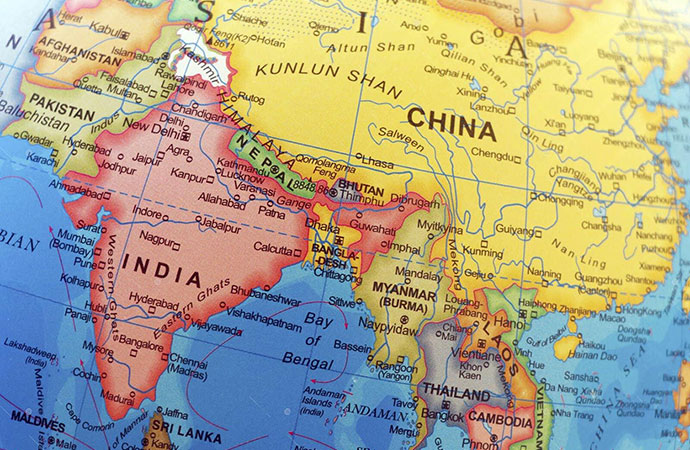
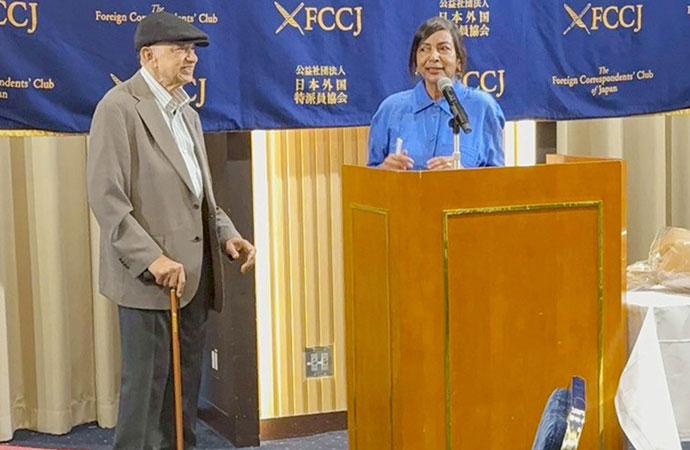
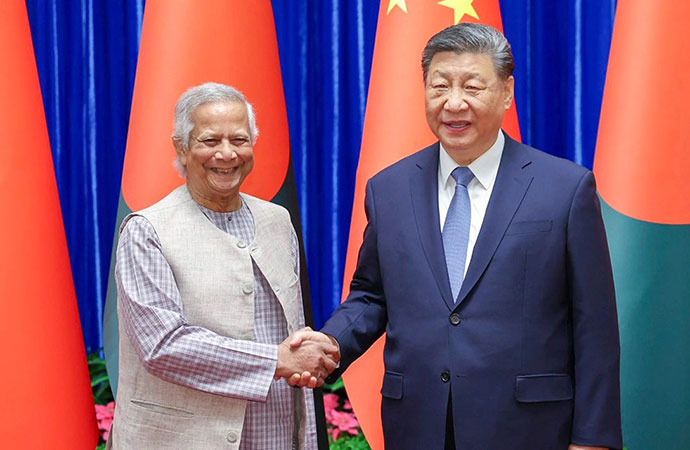

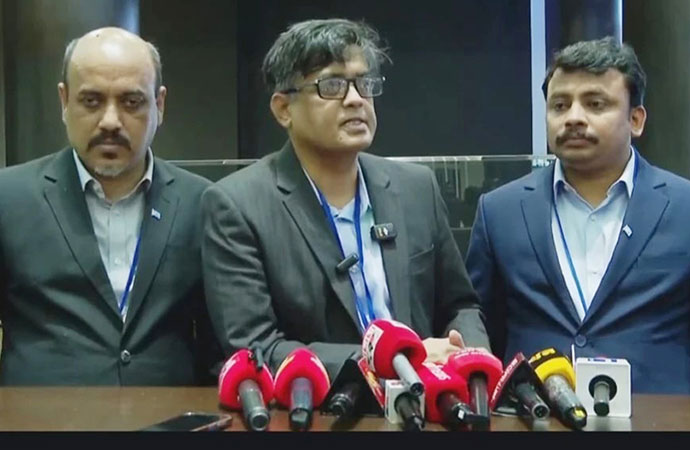


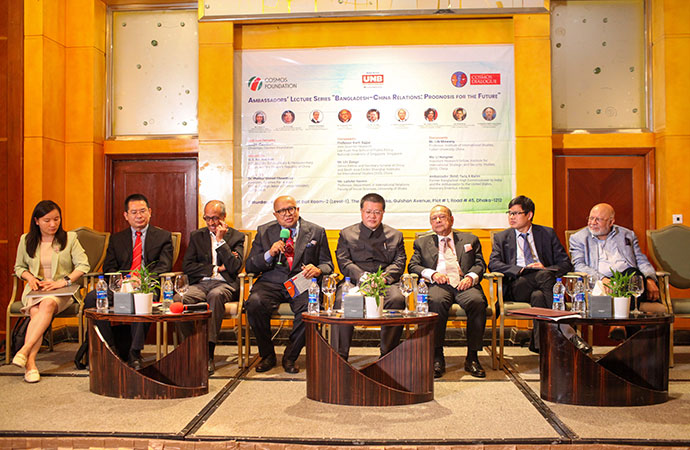


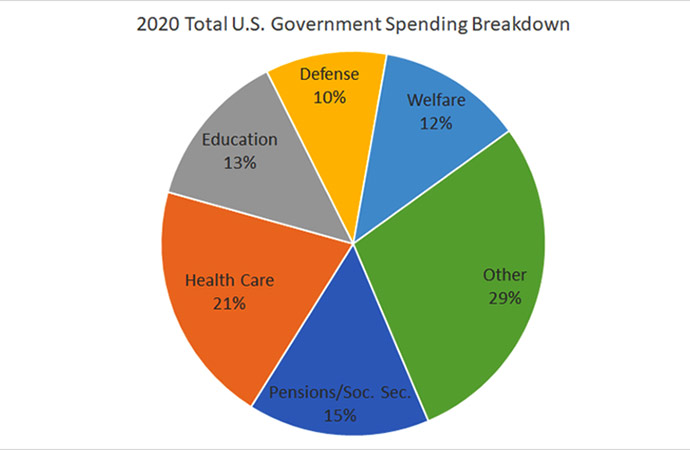





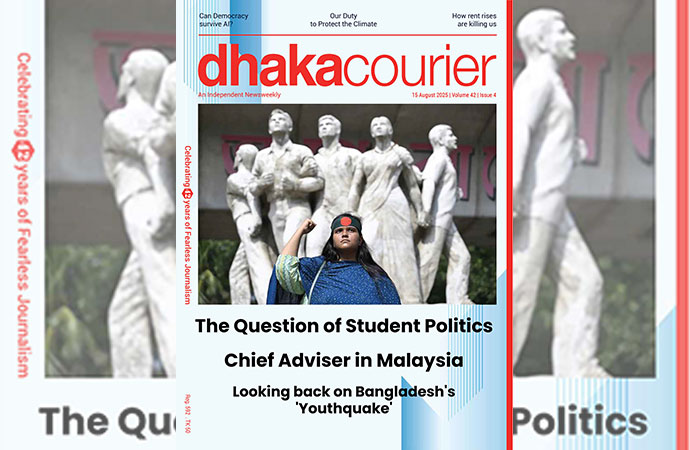
Leave a Comment
Recent Posts
Breakfast at Tiffany’s
Breakfast at Tiffany’s is an Old Hollywood film, released in 196 ...
Kalidas Karmakar’s ‘Holy War’ ...
Works of celebrated Bangladeshi masters, including Shilpacharya Zainul ...
All eyes on the Freedom Flotilla, as Shahidul Alam s ..
The disquiet in the Hills
Ocean Collective Summit 2025 Turning ‘What If’ into ..
Dhaka, Beijing should ‘deepen strategic partnership’ ..